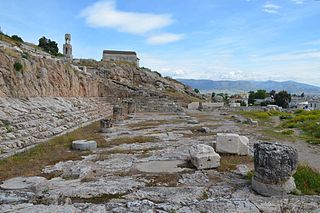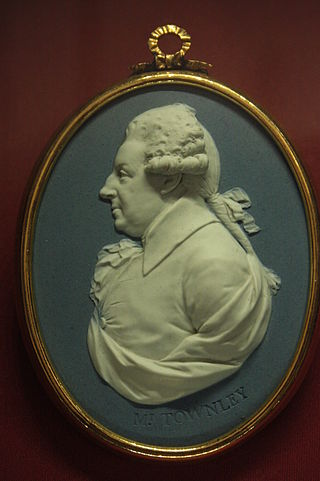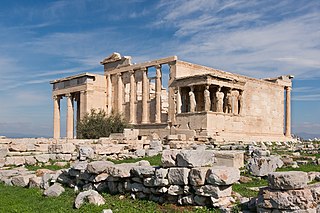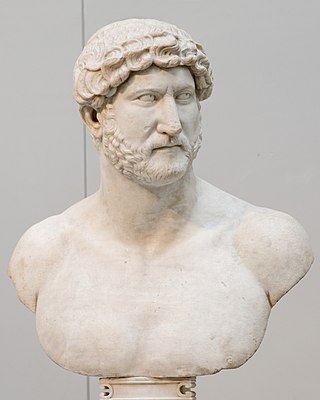
In ancient Greek religion and mythology, Demeter is the Olympian goddess of the harvest and agriculture, presiding over crops, grains, food, and the fertility of the earth. Although she is mostly known as a grain goddess, she also appeared as a goddess of health, birth, and marriage, and had connections to the Underworld. She is also called Deo (Δηώ). In Greek tradition, Demeter is the second child of the Titans Rhea and Cronus, and sister to Hestia, Hera, Hades, Poseidon, and Zeus. Like her other siblings but Zeus, she was swallowed by her father as an infant and rescued by Zeus.

Mystery religions, mystery cults, sacred mysteries or simply mysteries, were religious schools of the Greco-Roman world for which participation was reserved to initiates (mystai). The main characterization of this religion is the secrecy associated with the particulars of the initiation and the ritual practice, which may not be revealed to outsiders. The most famous mysteries of Greco-Roman antiquity were the Eleusinian Mysteries, which predated the Greek Dark Ages. The mystery schools flourished in Late Antiquity; Julian the Apostate in the mid 4th century is known to have been initiated into three distinct mystery schools—most notably the mithraists. Due to the secret nature of the school, and because the mystery religions of Late Antiquity were persecuted by the Christian Roman Empire from the 4th century, the details of these religious practices are derived from descriptions, imagery and cross-cultural studies. Much information on the Mysteries comes from Marcus Terentius Varro.

The Eleusinian Mysteries were initiations held every year for the cult of Demeter and Persephone based at the Panhellenic Sanctuary of Eleusis in ancient Greece. They are considered the "most famous of the secret religious rites of ancient Greece". Their basis was an old agrarian cult, and there is some evidence that they were derived from the religious practices of the Mycenean period. The Mysteries represented the myth of the abduction of Persephone from her mother Demeter by the king of the underworld Hades, in a cycle with three phases: the descent (loss), the search, and the ascent, with the main theme being the ascent of Persephone and the reunion with her mother. It was a major festival during the Hellenic era, and later spread to Rome. Similar religious rites appear in the agricultural societies of the Near East and in Minoan Crete.
Eleusinion was a sanctuary in Athens, Greece, dedicated to Demeter and Kore (Persephone).
In ancient Greek religion and mythology, Iacchus was a minor deity, of some cultic importance, particularly at Athens and Eleusis in connection with the Eleusinian mysteries, but without any significant mythology. He perhaps originated as the personification of the ritual exclamation Iacche! cried out during the Eleusinian procession from Athens to Eleusis. He was often identified with Dionysus, perhaps because of the resemblance of the names Iacchus and Bacchus, another name for Dionysus. By various accounts he was a son of Demeter, or a son of Persephone, identical with Dionysus Zagreus, or a son of Dionysus.

The Telesterion was a great hall and sanctuary in Eleusis, one of the primary centers of the Eleusinian Mysteries. The hall had a fifty-five yard square roof that could cover three-thousand people, but no one revealed what happened during these events beyond there being "something done, something said, and something shown". This building was built in the 7th century BCE and was an important site until it was destroyed in the 4th century CE. Devoted to Demeter and Persephone, these initiation ceremonies were the most sacred and ancient of all the religious rites celebrated in Greece.

Elefsina or Eleusis is a suburban city and municipality in the West Attica regional unit of Greece. It is located in the Thriasio Plain, at the northernmost end of the Saronic Gulf. North of Elefsina are Mandra and Magoula, while Aspropyrgos is to the northeast.

Charles Townley FRS was a wealthy English country gentleman, antiquary and collector, a member of the Towneley family. He travelled on three Grand Tours to Italy, buying antique sculpture, vases, coins, manuscripts and Old Master drawings and paintings. Many of the most important pieces from his collection, especially the Townley Marbles are now in the British Museum's Department of Greek and Roman Antiquities. The marbles were overshadowed at the time, and still today, by the Elgin Marbles.

The Erechtheion or Temple of Athena Polias is an ancient Greek Ionic temple-telesterion on the north side of the Acropolis, Athens, which was primarily dedicated to the goddess Athena. The building, made to house the statue of Athena Polias, has in modern scholarship been called the Erechtheion in the belief that Pausanias' description of the Erechtheion applies to this building. However, whether the Erechtheion referred to by Pausanias is indeed the Ionic temple or an entirely different building has become a point of contention in recent decades.

A caryatid is a sculpted female figure serving as an architectural support taking the place of a column or a pillar supporting an entablature on her head. The Greek term karyatides literally means "maidens of Karyai", an ancient town on the Peloponnese. Karyai had a temple dedicated to the goddess Artemis in her aspect of Artemis Karyatis: "As Karyatis she rejoiced in the dances of the nut-tree village of Karyai, those Karyatides, who in their ecstatic round-dance carried on their heads baskets of live reeds, as if they were dancing plants".
In Archaic Greece, an amphictyony, or amphictyonic league, was an ancient religious association of tribes formed before the rise of the Greek poleis.

Dion is a village and municipal unit in the municipality of Dion-Olympos in the Pieria regional unit, Greece. It is located at the foot of Mount Olympus at a distance of 17 km from the capital city of Katerini.

The Discobolus by Myron is an Ancient Greek sculpture completed at the start of the Classical period at around 460–450 BC. The sculpture depicts a youthful male athlete throwing a discus. The bronze Greek original is lost. The work is known through its numerous Roman copies, both full-scale ones in marble, which is cheaper than bronze, such as the first to be recovered, the Palombara Discobolus, and smaller scaled versions in bronze.

The Townley Vase is a large Roman marble vase of the 2nd century CE, discovered in 1773 by the Scottish antiquarian and dealer in antiquities Gavin Hamilton in excavating a Roman villa at Monte Cagnolo, between Genzano and Civita Lavinia, near the ancient Lanuvium, in Lazio, southeast of Rome. The ovoid vase has volute handles in the manner of a pottery krater. It is carved with a deep frieze in bas-relief, occupying most of the body, illustrating a Bacchanalian procession. Its name comes from the English collector Charles Townley, who purchased it from Hamilton in 1774 for £250. Townley's collection, long on display in his London house in Park Street, was bought for the British Museum after his death in 1805.

The Jennings Dog is a Roman sculpture of a dog with a docked tail. Named for its first modern owner, Henry Constantine Jennings, it is a 2nd-century AD Roman copy of a Hellenistic bronze original. The original was probably of the 2nd century BC. It is 1.05 metres high; its leonine muzzle and one leg have been repaired since its rediscovery. Though it is one of only a few animal sculptures surviving from antiquity, a pair of similar marble mastiffs of the same model can be seen in the Belvedere Court of the Vatican Museums.

The Sacred Way, in ancient Greece, was the road from Athens to Eleusis. It was so called because it was the route taken by a procession celebrating the Eleusinian Mysteries. The procession to Eleusis began at the Sacred Gate in the Kerameikos on the 19th Boedromion.

The Villa of the Quintilii is an ancient Roman villa beyond the fifth milestone along the Via Appia Antica just outside the traditional boundaries of Rome, Italy. It was built by the rich and cultured brothers Sextus Quintilius Valerius Maximus and Sextus Quintilius Condianus.
The festival calendar of Classical Athens involved the staging of many festivals each year. This includes festivals held in honor of Athena, Dionysus, Apollo, Artemis, Demeter, Persephone, Hermes, and Herakles. Other Athenian festivals were based around family, citizenship, sacrifice, and women. There were at least 120 festival days each year.

A bust of Hadrian, the second-century Roman emperor who rebuilt the Pantheon and constructed the Temple of Venus and Roma, was formerly displayed in Pope Sixtus V's Villa Montalto and is now displayed at the British Museum in London. The bust is one of the Townley Marbles collected by Charles Townley (1737–1805) and sold by his heir Peregrine Edward Towneley at a reduced price to the British Museum in 1805. Unlike most busts of Hadrian and other emperors, it shows him in heroic nudity. The bust was found in Rome and is carved from Greek marble.
The Arcadian Cults of the Mistresses are ancient cults that were practised in the region of Arcadia. Religious cults across Greece took on regional characteristics according to their location. As such, though the Arcadian Mistresses, Demeter and Kore, were worshipped elsewhere in Greece, their worship in Arcadia was distinctive to the region, with the third Arcadian Mistress, Despoina, being a goddess whose cults were geographically limited to Arcadia.















